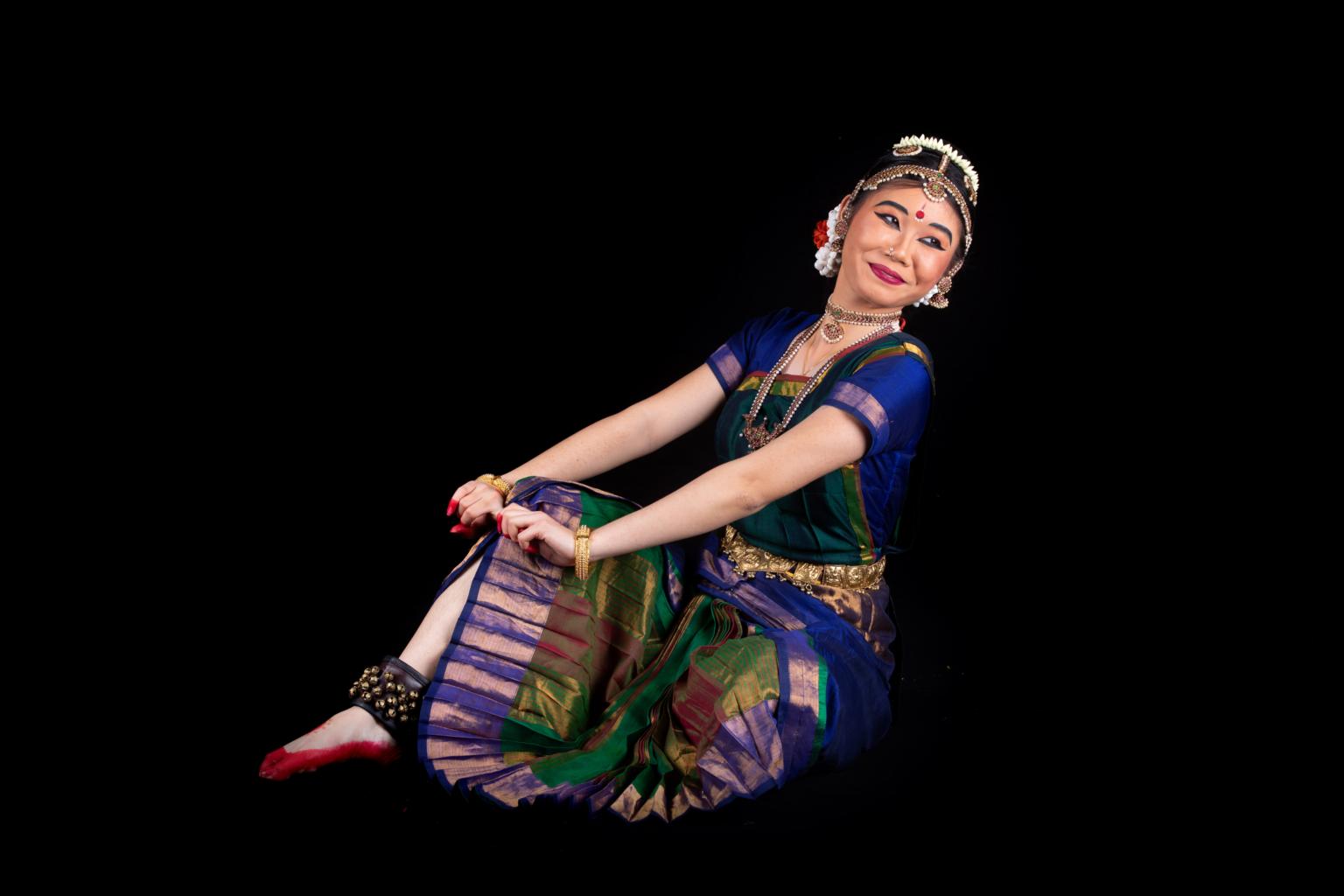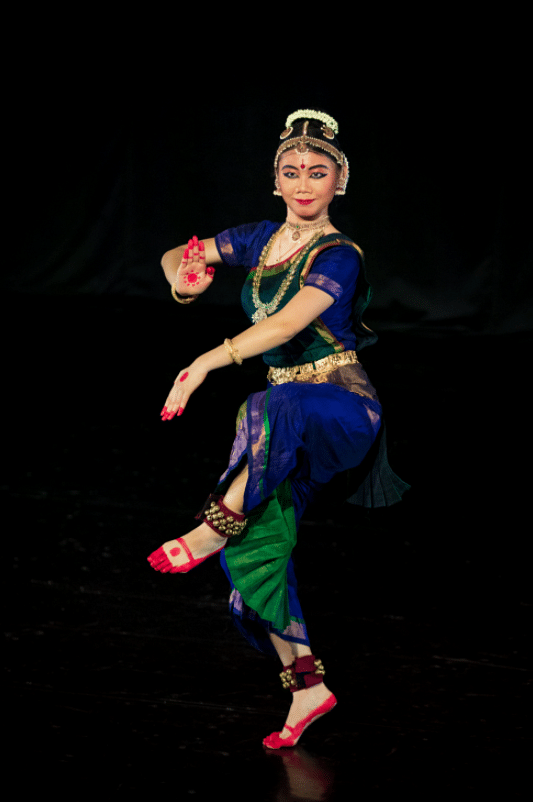Singaporean Chinese dancer makes history with full-fledged bharatanatyam recital
Sign up now: Get ST's newsletters delivered to your inbox

Soo Mei Fei's arangetram (stage debut) had a challenging repertoire, with difficult shabdam, varnam, padam, javali and thillana.
PHOTO: APSARA ARTS
V. K. Santosh Kumar
Follow topic:
SINGAPORE - In Secondary 1, Soo Mei Fei and her classmates saw a poster outside their National Junior College classroom which advertised: 'Indian dance try-out'.
"There were 15 of us, mostly non-Indians, and we decided to join as we thought it would be Bollywood," she recalled.
To their disappointment, it was in fact Indian classical dance. But Soo persisted.
Last Tuesday (Jan 26), the 23-year-old made history as the first Singaporean Chinese woman to perform a full-fledged arangetram, a debut recital of Indian classical dance bharatanatyam, on stage.
In the audience at the Goodman Arts Centre Black Box was veteran local dancer and choreographer V. Balakrishnan, who said: "The performance was not a debut but that of a professional dancer.
"I have no words to express the standard and quality of Mei Fei's performance from the first piece itself. She has a very bright future."
Soo's arangetram (stage debut) had a challenging repertoire, with difficult shabdam, varnam, padam, javali and thillana - key elements in the Indian classical dance form bharatanatyam.
But, more importantly, she had to tellingly show expressions of love for the lord as the theme was Mohamana: The Love Within.
"I was nervous before going up on stage despite all the preparation," Soo told tabla!. "Whether you are Chinese or Indian, arangetram is one of the biggest events in your dancing career and you are anxious to do well.
"But I wanted to enjoy my performance and let everything go. Dance is for everyone and I wanted to do it well so that everyone could enjoy it."
Soo was preceded in the mastery of bharatanatyam by Singaporeans Richard Tan, who studied at the famous Kalakshetra dance school in Chennai, in the 1960s, and Temasek Polytechnic assistant director of arts and culture Sonny Lim in the 1990s, according to the book Kala Manjari: 50 Years Of Indian Classical Music And Dance In Singapore (2015).
Ms Yam Boon Fong, who does work related to dance education, had also staged a bharatanatyam solo in 2011.
Soo's teacher Mohanapriyan Thavarajah, who is the principal dancer and resident choreographer at Apsaras Arts, said: "Mei Fei showed so much passion for bharatanatyam that I took it as a challenge to teach her the nuances.
"Her origin does not matter. All that is needed is a strong physique and good soul to understand the technique."

Soo, who joined Apsaras in 2015, has been training under Mr Mohanapriyan for the past four years. She was taught the basics by Mrs Vijaya Nadesan, the academy's principal, and the late Ms Neila Sathyalingam, one of its founders.
"One day, while I was in the car with Vijaya akka, I asked her if I could learn dance at Apsaras," said Soo.
"I was insecure and a bit worried because I was 17 and most students learn bharatanatyam at a very young age. I felt I was already old. But she reassured me and told me that I could try out at the academy."
For her first class under Mrs Sathyalingam, she turned up in a T-shirt and trousers.
"Neila mami was nice," said Soo. "She said I have potential and encouraged me to attend classes regularly."
Soo immediately bought a dance sari and kurta and devoted herself to learning. "My class was for about two hours from 9am but I would stay back for every other class until everyone left at 4pm," she said. "I would simply sit and watch what the seniors were doing."
The learning process was difficult for her at first because the lyrics and text sounded foreign. "I went online to translate the Tamil and Telugu words into English but it didn't really work," she said.
"I soon realised that I could grasp the situation better if the teacher explained it with simple gestures. For example, I now know how to express karuna (compassion). I didn't learn it from Google translation. I know the feeling because Mohanapriyan anna showed me what it is all about."
Soo, who did a degree in arts at Lasalle College of the Arts, has been part of large Apsaras productions like Anjaneyam in 2017, but it is as a solo artiste that she wants to shine. "I have so much to catch up on, I was late to the game," she said.
"Large shows have taught me about rhythmic patterns but I want to learn more. I have recently gone in depth into learning abhinaya (art of expression). I have understood that by 'opening my heart' I can learn a lot."
Soo, who is working as a teacher at a children's enrichment centre, practises bharatanatyam for at least 11 hours over four days every week. She also does body conditioning and pilates. But she is not yet sure if she will take it up full-time.
She is encouraged when people see her taking the train to her home in Punggol dressed in her dancing outfit and tell her that it is "very nice to see someone non-Indian appreciating Indian culture".
"I'm blessed to learn bharatanatyam," she said. "It's such a beautiful art. It's not been an easy journey but it has been extremely fulfilling. I want to train more."
This article first appeared in tabla! on Jan 29.
This article has been edited for clarity.

